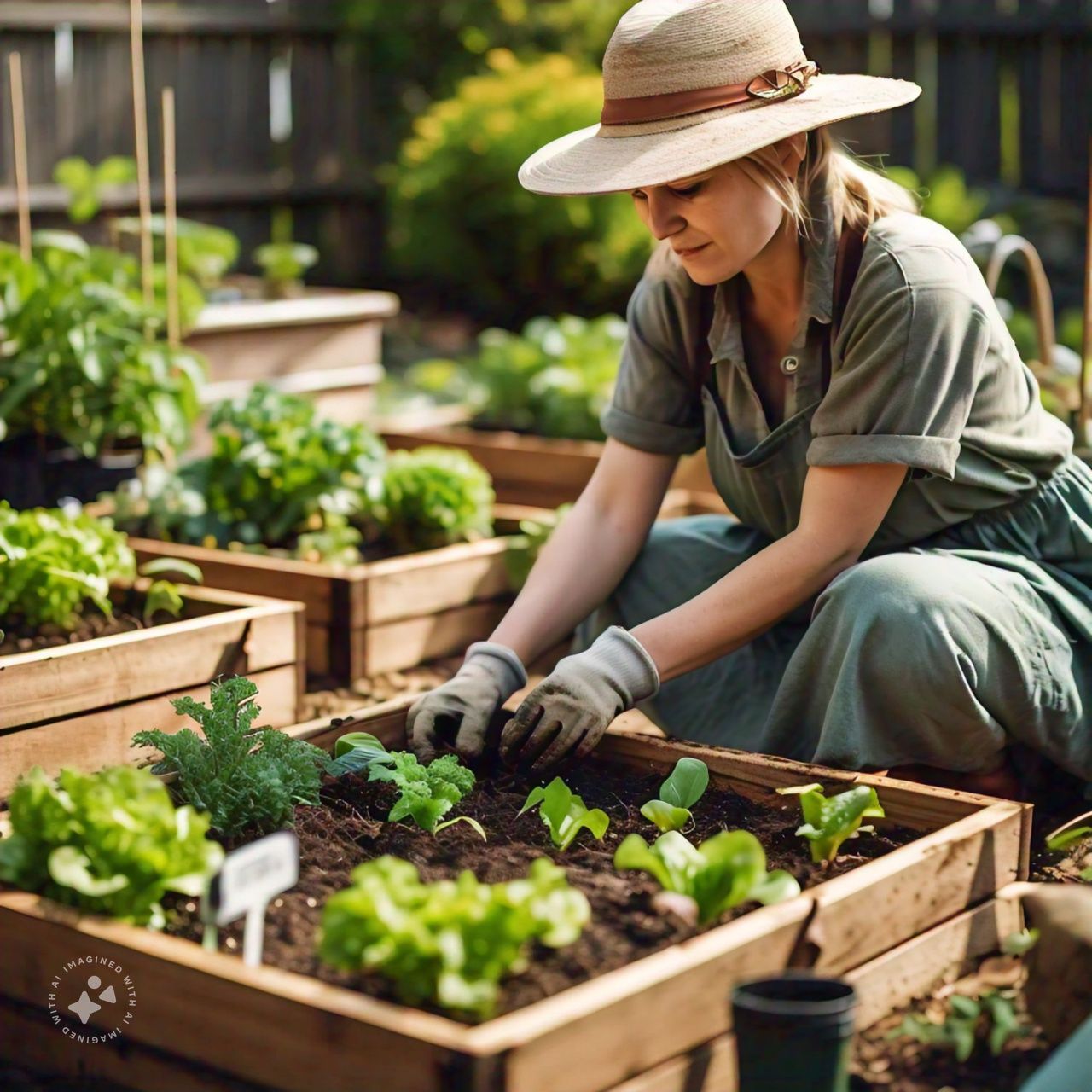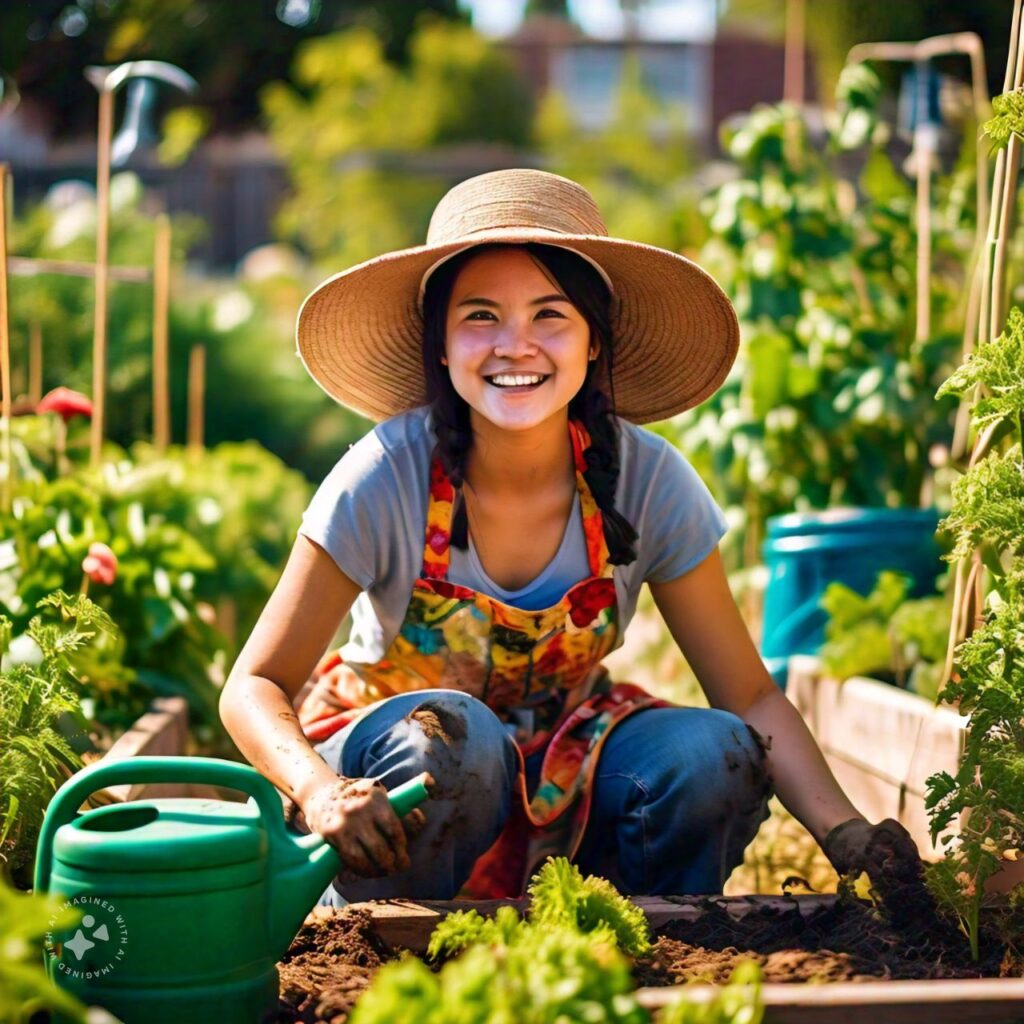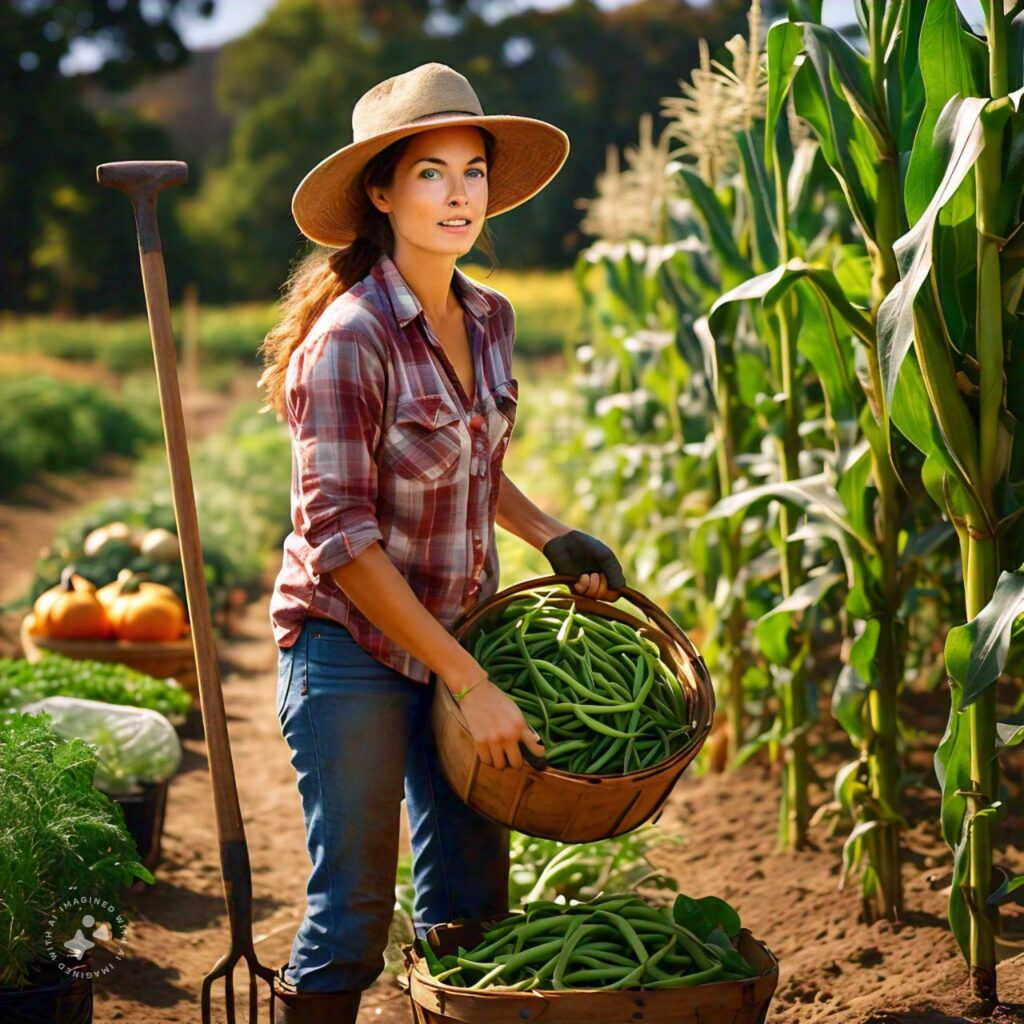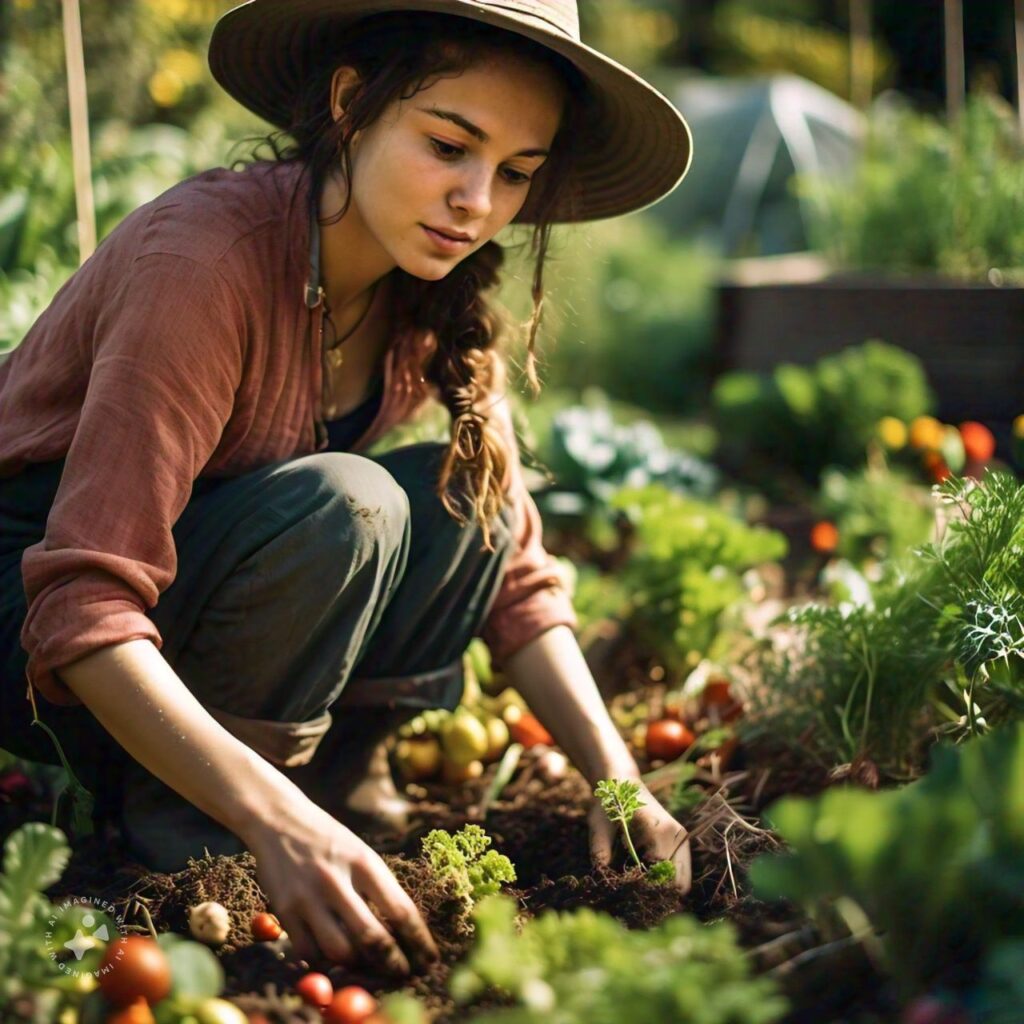Square foot gardening is a revolutionary approach to growing food that maximizes space, minimizes effort, and produces abundant harvests. This method is ideal for both novice and experienced gardeners who want to make the most out of their garden, whether it’s a small urban plot or a more extensive suburban backyard. In this comprehensive guide, we will explore the principles, benefits, and step-by-step process of square foot gardening, ensuring that your garden thrives season after season.
What is Square Foot Gardening?
Square foot gardening is a method developed by Mel Bartholomew in the 1980s. It involves dividing a garden bed into small, square sections, typically one foot by one foot, hence the name. Each square is planted with a different crop, allowing for maximum variety and yield in a limited space. This method not only conserves resources like water and soil but also reduces the need for weeding and maintenance.
The Benefits of Square Foot Gardening
1. Efficient Use of Space
One of the most significant advantages of square foot gardening is the efficient use of space. By planting in a grid system, you can grow a variety of crops in a small area, making it ideal for urban environments where space is at a premium. This method allows you to grow more food per square foot than traditional row gardening.
2. Reduced Weeding and Maintenance
The close spacing of plants in square foot gardening naturally suppresses weeds by shading the soil. This reduces the need for weeding and makes maintenance easier. Additionally, because the garden is divided into small sections, you can easily manage each square independently, making it easier to rotate crops and maintain soil health.
3. Water Conservation
Square foot gardening requires less water than traditional gardening methods. The densely planted squares reduce evaporation, and the use of raised beds allows for better drainage and moisture retention. This method also encourages the use of organic mulches, which further conserve water by reducing evaporation from the soil surface.
4. Higher Yields
By planting intensively in a small space, square foot gardening can produce higher yields than conventional gardening methods. This is particularly beneficial for gardeners with limited space who want to maximize their harvest.
5. Easy Crop Rotation
The grid system of square foot gardening makes crop rotation simple and effective. By rotating crops within the squares, you can prevent soil depletion and reduce the risk of pests and diseases. This method also makes it easy to plan successive plantings, ensuring a continuous harvest throughout the growing season.
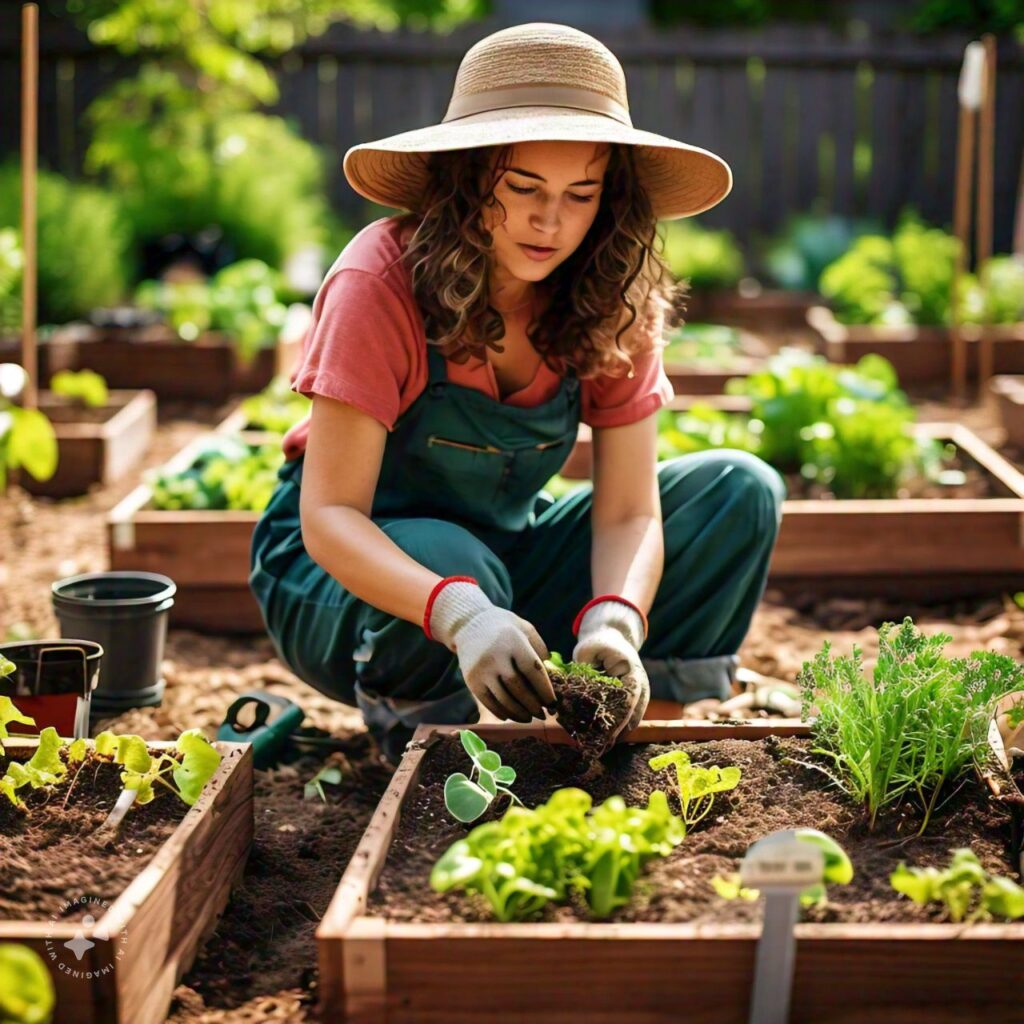
How to Start a Square Foot Garden
1. Choosing the Right Location
The first step in creating a square foot garden is selecting the right location. Choose a spot that receives at least six to eight hours of sunlight per day. Ensure that the area is level and has good drainage. If you’re gardening in an urban setting, consider using raised beds or containers.
2. Building the Raised Bed
Raised beds are an essential component of square foot gardening. They provide better soil drainage, prevent soil compaction, and make it easier to control the quality of the soil. To build a raised bed, use untreated wood, bricks, or other non-toxic materials. The standard size for a square foot garden bed is 4 feet by 4 feet, which provides 16 square feet of growing space.
3. Preparing the Soil
The quality of the soil is crucial to the success of your square foot garden. Use a soil mix that is light, well-draining, and rich in organic matter. A common mix recommended for square foot gardening is one-third compost, one-third peat moss, and one-third vermiculite. This mix provides the necessary nutrients, retains moisture, and ensures proper drainage.
4. Creating the Grid
Once your raised bed is filled with soil, it’s time to create the grid. Divide the surface of the bed into 1-foot by 1-foot squares using wooden slats, string, or any other material that can create a visible grid. Each square will be used to plant a different crop, allowing for a diverse and productive garden.
5. Selecting and Planting Crops
When choosing crops for your square foot garden, consider the space each plant needs. Some plants, like lettuce and radishes, can be planted closer together, while larger plants, like tomatoes and peppers, may require an entire square to themselves. Here’s a basic guide for planting in a square foot garden:
- 1 plant per square: Tomato, pepper, broccoli, cabbage.
- 4 plants per square: Lettuce, spinach, chard.
- 9 plants per square: Beet, onion, garlic.
- 16 plants per square: Radish, carrot, turnip.
After selecting your crops, plant seeds or seedlings in the appropriate squares, following the spacing recommendations. Water the garden thoroughly after planting.
6. Caring for Your Square Foot Garden
Caring for a square foot garden is relatively simple. Regularly check the soil moisture and water as needed, usually when the top inch of soil feels dry. Apply organic mulch around the plants to retain moisture and suppress weeds. Fertilize the garden periodically with a balanced organic fertilizer to keep the plants healthy and productive.
7. Harvesting Your Crops
One of the joys of square foot gardening is the ability to harvest fresh produce throughout the growing season. Harvest crops as they mature, and replace them with new plants to maintain a continuous harvest. For example, after harvesting lettuce, you can plant beans or carrots in the same square.
8. Extending the Growing Season
Square foot gardening is well-suited for extending the growing season. Use row covers, cold frames, or cloches to protect plants from frost and extend the harvest into the colder months. With careful planning, you can enjoy fresh produce from your garden almost year-round.

Common Mistakes to Avoid in Square Foot Gardening
1. Overcrowding
While square foot gardening is designed to maximize space, it’s essential not to overcrowd your plants. Overcrowding can lead to poor air circulation, increased disease risk, and reduced yields. Follow the recommended plant spacing for each crop to ensure healthy growth.
2. Ignoring Soil Health
The success of your square foot garden depends on the quality of the soil. Avoid using poor-quality soil or neglecting to amend it with organic matter. Regularly test your soil’s pH and nutrient levels, and adjust as needed to keep your plants thriving.
3. Neglecting Watering Needs
Even though square foot gardens require less water, it’s crucial to monitor your garden’s moisture levels regularly. Overwatering or underwatering can stress plants and reduce yields. Use a drip irrigation system or soaker hoses to provide consistent moisture to your garden.
4. Not Rotating Crops
Crop rotation is vital for maintaining soil health and preventing pests and diseases. Avoid planting the same crop in the same square year after year. Rotate crops within the grid to ensure that the soil remains fertile and healthy.
Conclusion
Square foot gardening is an innovative and efficient method that allows gardeners of all skill levels to grow a diverse range of crops in a limited space. By following the principles outlined in this guide, you can create a productive and sustainable garden that provides fresh, healthy produce throughout the year. Whether you’re a seasoned gardener or just starting, square foot gardening offers a practical and rewarding way to cultivate your green space.
